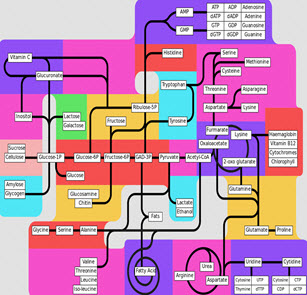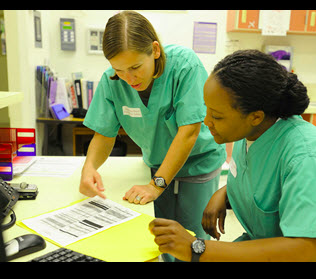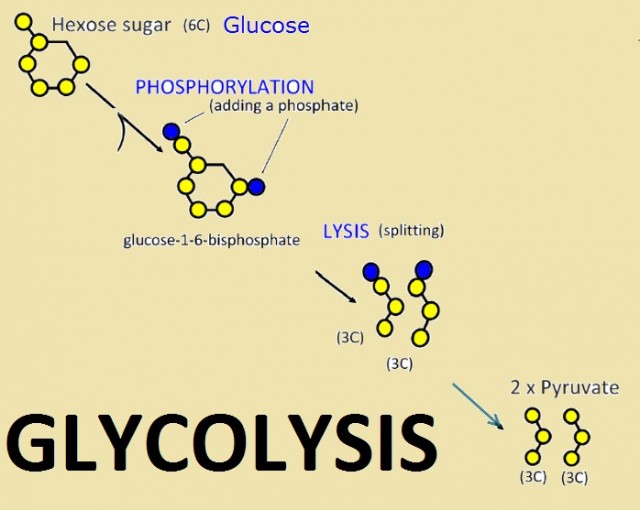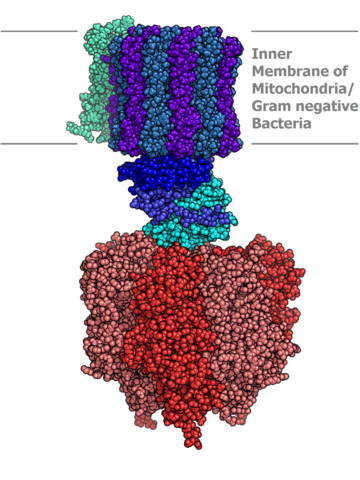HL Metabolism Activities for Learning
Lesson plans for metabolism, cell respiration and photosynthesis
The ideas for learning activities on this page aim to cover the whole of the IB guide for this topic. Where a full lesson plan has been developed it includes resources to use on an interactive whiteboard and worksheets to print. There is a mix of laboratory work, theory lessons, and assessment materials with model answers.
Metabolism - Planning sheet 8.1This simple sheet sets out the learning objectives, essential questions and some ideas for assessment for the following activities. | ||
 | Activation energy and enzyme pathwaysStudents are introduced to a simple metabolic pathway consisting of a chain of enzyme-catalysed reactions leading to the Kreb's cycle which is a cycle of enzyme catalysed reactions. The method of enzymes to lower the activation energy is explained through an animation and there are some questions for students to answer. | |
 | Emergency room activity - enzyme inhibitionThis lesson introduces students to the medical use of enzyme inhibitors through a simple role play activity. Each student first completes a training course in toxicology covering the metabolism of alcohol and antifreeze (ethylene glycol) in the liver, the symptoms and some possible treatments. Then students are presented with two clinical cases of possible antifreeze poisoning. It is up to the students to use their understanding of enzyme inhibition to decide on possible treatments for each patient. | |
 | End product inhibition of Enzymes.Following a quick review of enzyme inhibition students complete a few structured notes leading to an experiment with enzymes and inhibitors. Students collect data and produce graphs for analysis. A third activity summarises the way end product inhibition can control enzyme activity and maintain a concentration of product in a cell. | |
Cell Respiration - Planning sheet 8.2This simple sheet sets out the learning objectives, essential questions and some ideas for assessment for the following activities. | ||
 | HL Respiration introductionTime: 1hr Students are introduced to four important reaction types found in respiration, oxidation, reduction, phosphorylation and decarboxylation. There is a short presentation which helps to explain each reaction and put it into context. This is followed by a set of flashcards and a few IB style questions to test understanding. | |
 | Glycolysis and the Krebs CycleTime: 1hr This lesson recaps the SL details of respiration with a few simple resources about glycolysis,the link reaction and the Krebs Cycle. Students are challenged with the production of a diagram in groups to show these biochemical pathways and to point out How many molecules of ATP, NADH+H+ and FADH+H+ are produced in each stage and in total? | |
 | Electron Transport Chain and ChemiosmosisTime: 1h Modelling the biochemical process is the aim of the activities in this lesson. Using some simple slides students are introduced to the movement of H+ ions and electrons in the inner membrane of the mitochondrion. With a simple board game loosely based on backgammon they model the movement of hydrogen ions, electron carriers and the ATP synthase enzyme. This helps students to understand chemiosmosis too. | |
 | Investigating strawberries with a glucose test meterTime: 1h - This page explores a use of affordable glucose test meters to estimate glucose concentrations in strawberries. These amazing gadgets use nanotubes containing enzymes to turn glucose molecules into electrical signals. There are several steps involving oxidation and reduction requiring students to apply their knowledge of metabolic pathways. A final activity encourages students to use design thinking to propose ideas for IA research questions. | |
Photosynthesis - Planning sheet 8.3This simple sheet sets out the learning objectives, essential questions and some ideas for assessment for the following activities. | ||
 | Chloroplasts and Photosynthesis | |
 | Light Dependent ReactionsTime: 1h This activity reviews the light dependent reactions of photosynthesis which occurs on the thylakoids of the chloroplast. A first activity introduces the parts of the membrane and the stages of the reactions, a second activity uses SOLO hexagons to give students an opportunity to organise the ideas into a sequence or into groups. The final activity illustrates a method of remembering a complex sequence of reactions like this. | |
 | Light Independent ReactionsTime: 1-2hrs The reactions of the Stroma of the Chloroplast are known as the light independent reactions and also the Calvin cycle. This activity introduces some of the molecules to students and some steps of the reactions then asks the students to link their ideas using a set of SOLO hexagons to answer an IB style question. A final activity includes an excellent animation of the whole process of photosynthesis and a summative task to assemble all the cards from both light dependent and light independent reactions of photosynthesis. This could be used as assessment. |

 IB Docs (2) Team
IB Docs (2) Team
